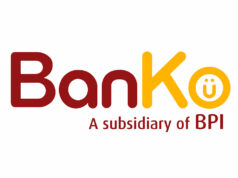Peso expected to move sideways as markets look for fresh drivers
 THE PESO is seen to move sideways this week amid a lack of fresh leads, with the market to be on the lookout for the latest currency news from China.
THE PESO is seen to move sideways this week amid a lack of fresh leads, with the market to be on the lookout for the latest currency news from China.
The local unit ended last week’s trading stronger as it gained 16 centavos to P51.88 against the dollar on Friday from the P52.04 finish on Thursday.
This came after the Bangko Sentral ng Pilipinas’ (BSP) Monetary Board cut key interest rates by a quarter of a percentage point amid disappointing economic growth logged in the second quarter.
However, on a week-on-week basis, the local unit closed 45 centavos weaker than its Aug. 2 close of P51.43 versus the greenback.
For this week, the peso will likely be range-bound as the market looks for fresh drivers.
“The peso may [trade] sideways [this] week for lack of significant market-mover data release. But again, the market is also watching China’s potential continuation of its currency moves,” Ruben Carlo O. Asuncion, chief economist at Union Bank of the Philippines, Inc., said in an e-mail late last week.
Last week, the People’s Bank of China devalued its own currency to 7 yuan against the dollar in retaliation against US President Donald Trump’s plan to impose an additional 10% tariff on $300 billion worth of Chinese goods starting Sept 1.
Tensions between the two countries escalated further after the US called China a “currency manipulator.”
Volatility in China’s yuan since August is a normal market reaction to escalating trade frictions stoked by the United States and was caused, to some extent, by Washington’s decision to raise tariffs, a senior Chinese central bank official said over the weekend.
Zhu Jun, director-general of the People’s Bank of China’s international department, made the comments on Saturday to a forum held in the northern Chinese province of Heilongjiang.
Ms. Zhu said that the yuan’s move was a normal reaction to Mr. Trump’s tariff threat.
“The labeling…violates basic, common economic sense and international consensus, and is unconvincing,” Ms. Zhu said, adding that the Chinese economy was resilient and capable of coping with various situations.
For his part, Michael L. Ricafort, economist at Rizal Commercial Banking Corp., said in a separate e-mail: “The latest 0.25% cut in local policy rate has positive effects on the local economy and financial markets in terms of lower borrowing/financing costs that help spur greater economic activities and faster GDP (gross domestic product) growth.”
He added that another factor to be considered by the market this week is the signal coming from the BSP chief of the possibility of another rate cut and further reductions to the reserve requirement ratios of banks as early as the Monetary Board’s Sept. 26 policy review.
In a Bloomberg interview following the rate cut last Thursday, BSP Governor Benjamin E. Diokno said policy makers may slash key rates further in their next meeting in September or in the first few weeks of the fourth quarter.
In a separate interview with ABS-CBN News Channel, Mr. Diokno said banks’ RRR may be reduced by another 100 bps before the Sept. 26 policy meeting. — Mark T. Amoguis



